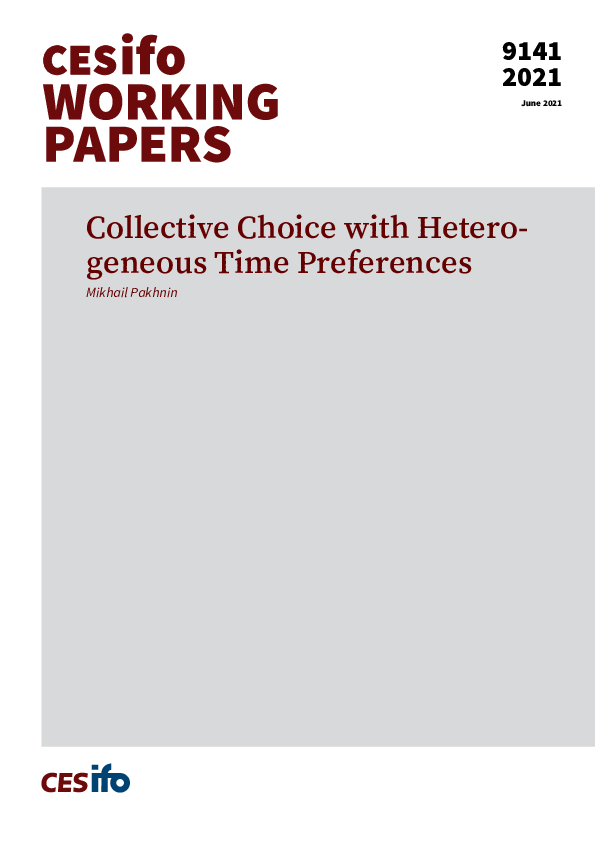Collective Choice with Heterogeneous Time Preferences
CESifo, Munich, 2021
CESifo Working Paper No. 9141

This paper reviews recent research on the aggregation of heterogeneous time preferences. Main results are illustrated in simple Ramsey models with two or three agents who differ in their discount factors. We employ an intertemporal view on these models and argue that preferences of a decision maker should be represented by a sequence of utility functions. This allows us to clarify the issue of dynamic inconsistency and relate it to simple properties of discounting. We distinguish between private and common consumption cases. In the private consumption case, we discuss the properties of sequences of Paretian social welfare functions and explain why the notion of Pareto optimality under heterogeneous time preferences becomes problematic. In the common consumption case, we focus on the problem of collective choice under heterogeneous time preferences, discuss the difficulties with dynamic voting procedures and review some ways to overcome them. We conclude by highlighting the implications of our discussion for the problem of choosing an appropriate social discount rate.
Public Choice
Fiscal Policy, Macroeconomics and Growth